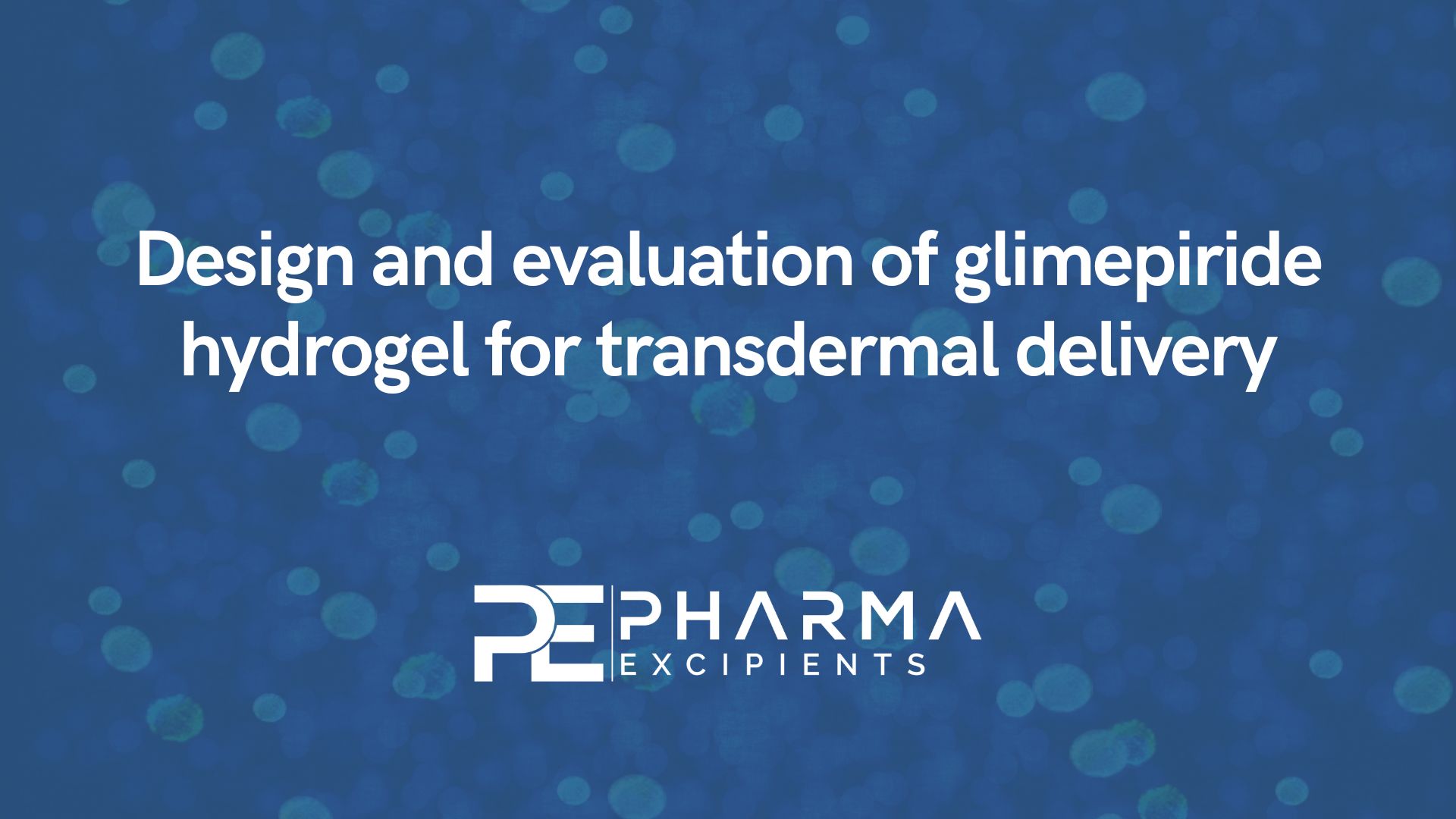Design and evaluation of glimepiride hydrogel for transdermal delivery

The solubility of glimepiride (GM) was improved from 1.6 μg/mL to 22.0 mg/mL when GM and meglumine (MU) complexes were prepared. Therefore, transdermal hydrogels of GM Carbopol (GM-CP) and GM hydroxypropyl methylcellulose pullulan (GM-HPMC-Pu) were prepared successfully utilizing the improved drug solubility by GM-MU. Based on a single factor experiment and response surface methodology, two kinds of hydrogel formulations were optimized by drug release studies in vitro. The optimized GM-CP hydrogel was composed of GM, a mixture of azone and oleic acid (1:1, 2.6%, v/v) and carbopol 940 (1%, w/v). The GM-HPMC-Pu hydrogel was developed using GM, HPMC (3.5%, w/v), Pu (1.5%, w/v), glycerol (5%, v/v), azone (2.9%, v/v) and oleic acid (2.6%, v/v). The study of hydrogels in vivo was performed using rabbits. The results indicated that the drug could sustain release from GM-CP or GM-HPMC-Pu hydrogel and maintain the high plasma concentration for 48 h. Compared with commercial GM tablets, the relative bioavailability of GM-CP and GM-HPMC-Pu hydrogel reached 48% and 133%, respectively. Moreover, the drug release in vitro could well predict its absorption in vivo. There was a good correlation (R2≥0.966) in GM hydrogel between the drug release in vitro and transdermal absorption in vivo. Therefore, a novel GM hydrogel dosage form may be considered to design.
Read more
(2022) Design and evaluation of glimepiride hydrogel for transdermal delivery, Drug Development and Industrial Pharmacy,
DOI: 10.1080/03639045.2022.2120493

